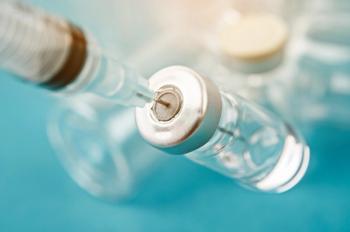
- Vol 37, Issue 10
- Volume 37
- Issue 10
Documenting Recovery in Delusional Disorder With the MMPI-2
This case illustrates the practical implications and effectiveness of the Minnesota Multiphasic Personality Inventory-2 in documenting patient recovery during treatment for delusional disorder.
CASE STUDY
Delusional disorder is a major psychotic illness that is enigmatic and poorly understood. It is often difficult to treat because of the individual’s denial of a problem, difficulties in establishing a therapeutic alliance, and interpersonal and social conflicts. Unfortunately, many individuals with this disorder refuse treatment altogether. Available research suggests that 50% of patients who are adequately treated achieve a symptom-free recovery, while 90% of patients demonstrate at least some improvement.1 It has been found that persecutory delusions respond least well to treatment, with 50% improvement rates and
This case illustrates the effectiveness of the MMPI-2 in documenting patient recovery during treatment for delusional disorder. Practical implications for psychiatrists and other mental health professionals are discussed.
“Mary,” a 42-year-old white female, temporarily lost custody of her 3 children to her ex-husband 18 months ago due to apparent psychotic-level functioning. I was appointed by the court to arrive at a definitive diagnosis and to provide appropriate guidance about her parenting abilities and custody status. (Mary, a pseudonym, has given written informed consent for her case to be included in this presentation. Identifying information about her has been altered to protect her privacy.)
Mary’s primary symptoms included both persecutory delusions and somatic delusions. Her delusions had been present for about 2 years. She believed that her colleagues at work were concocting a scheme to have her fired. She believed that her mother was not her biological parent. Mary also believed that drones were hovering over her home and that someone had installed a camera in her car to follow her. She reported unrelenting somatic symptoms that she attributed to an alien virus that had been planted in her water at home. Because of her delusional thinking, Mary had recently quit her job and was residing with her parents.
Prior to the onset of her delusions, Mary had obtained 2 master’s degrees and had a full-time position. She had a boyfriend, many friends, and her family relationships were intact. She was described as a smart and sweet person. She had been given primary custody of her 3 children at the time of her divorce 4 years earlier; it was not a highly adversarial divorce proceeding. She had no medical problems. She had no family history of psychosis or other psychiatric disorder.
Mary had been seeing a psychiatrist for several months prior to my involvement in the case; I obtained her records from him. Mary was described as having depression and anxiety. Psychosis was not noted. She was being treated with fluoxetine 20 mg and bupropion hydrochloride extended-release tablets 150 mg, but she was not improving. Mary had not divulged any delusional material to her psychiatrist.
Clinically, Mary was appropriately attired and well-groomed for her sessions with me. She wore make-up and jewelry. She was pleasant with me and made good eye contact. Mary’s cognitive abilities were intact. Her affect was slightly dysphoric but within normal limits. She was not manic or hypomanic. Mary’s delusions were prominent, and she had little or no insight into their nature and severity. She was also suspicious of me; she thought I might be involved in the conspiracy with her colleagues at work.
I asked Mary to provide a urine screen to rule out substance abuse. Her urine screen the same day was negative for illicit drugs.
Mary completed the MMPI-2, answering all 567 questions in 90 minutes. Her responses were scored on 3 validity scales, 10 basic clinical scales, and the PSY-5 supplementary scales.
Mary showed considerable distress but in the context of normal validity scales. She approached the test in an open and honest fashion. She did not exaggerate her symptoms. She was not defensive or guarded. Her responses were considered valid. She was to be believed.
Ten basic clinical scales were developed to assess different psychiatric conditions and symptoms. See
Supplementary scales are available on the MMPI-2 as well. Mary’s PSY-5 scales showed a significant elevation on the scale having to do with psychosis. This was corroborative data to Mary’s 10 basic clinical scales.
Based on her history, clinical observations, and MMPI-2 test data, I diagnosed Mary with delusional disorder. Her delusional disorder was primary. She did not have a comorbid condition, such as bipolar disorder or schizophrenia. Mary did not have major depressive disorder or an anxiety disorder nor was she abusing alcohol or drugs.
No specific stressors were identified that contributed to the onset of Mary’s delusional disorder. However, she was feeling “pressure” from juggling a full-time job with raising 3 children.
Interestingly, Mary’s psychiatrist and I independently but simultaneously came to the conclusion that she had delusional disorder. Mary was started on ziprasidone 20 mg. Fluoxetine 20 mg was continued. A brain MRI at that time was negative. Bupropion was stopped because it enhances dopamine levels and can
I re-evaluated Mary 4 months later in preparation for her upcoming court appearance. The court would want to hear about my findings and conclusions as well as any progress in her condition since her last court hearing. I interviewed Mary on 2 occasions. She completed the MMPI-2 again, and I obtained updated records from her psychiatrist.
After 4 months on ziprasidone, Mary was remarkably improved. She was tolerating it well, and her delusions had remitted. She had developed important insight about her resolved delusions. They now seemed foreign and distant to her; they did not make sense to her. She could not even recall her suspiciousness about me. Mary’s affect was bright. She was talkative and expressive. She was appreciative of everyone’s concerns. Mary was looking for a full-time job and planned to get her own apartment.
Mary’s MMPI-2 after 4 months of treatment was remarkable as well. It was completely normal. Her validity scales were normal. All 10 basic clinical scales were normal; there were no significant elevations. In fact, there were no near-significant elevations. Her PSY-5 scales were normal as well. All signs of psychosis had dissipated.
Mary will be maintained on ziprasidone for the foreseeable future. She will have monthly to quarterly visits with her psychiatrist. Cognitive behavior therapy has been added to her treatment regimen, since it is regarded as a
Discussion
This case study illustrates many important clinical and practical points.
Mary’s persecutory delusions and somatic delusions both abated with treatment. This result is consistent with the literature that reports that 50% of patients treated adequately achieve a symptom-free recovery.1 Delusional disorder in this case was treated successfully with antipsychotic medication (ziprasidone 20 mg). This finding is contrary to the data that suggest that persecutory delusions are recalcitrant.2 Mary did not have a
Overall, Mary’s recovery was likely due to a combination of the relatively short duration of her delusions (about 2 years), the lack of a comorbid condition, the use of an antipsychotic medication, the discontinuance of bupropion, and her high level of premorbid functioning.
The MMPI-2 proved to be a sensitive outcome measure in evaluating this patient’s improvement. Using the MMPI-2 at the time of diagnosis and later during treatment is an objective, data-driven way to assess a patient’s response to treatment. The MMPI-2 can be administered easily and is not overly intrusive.
Concluding thoughts
Lessons learned from this case study are clinically interesting, but only suggestive. Well-designed research is needed to study the proposition that the MMPI-2 is a highly effective instrument for evaluating treatment outcome in delusional disorder.
Mary’s psychiatrist and I worked independently but in a cooperative fashion. This was quite helpful in facilitating Mary’s evaluation and treatment with minimal delays and roadblocks. The sharing of findings and conclusions between us led to an excellent result after much initial confusion.
Mary was fully adherent with her evaluation and treatment, whereas many patients with delusional disorder refuse treatment. Mary’s successful treatment was largely attributable to her therapeutic alliance with her psychiatrist and me. Her motivation to get well superseded any desire to resist intervention.
Whether Mary will have a recurrence in her delusional disorder is unclear. Longitudinal research is needed to address the question of incidence recurrence in this specific illness. With other types of psychotic disorders,
The impact of psychotic disorders on child custody cases is a delicate matter. It should be recognized by all parties that a parent’s recovery from a psychotic disorder may be less than permanent. Child custody decisions need to be made with that psychiatric reality in mind. Maintenance treatment for the parent with a psychotic disorder is the vehicle by which parenting abilities can be regained and sustained.9,10
Dr Blotcky is a clinical psychologist in private practice in Birmingham, Alabama. He is clinical associate professor, department of psychology, University of Alabama at Birmingham. Much of his clinical practice is devoted to forensic cases, including child custody, personal injury, and criminal cases.
References
1. Bourgeois JA. Delusional disorder: Overview, diagnosis, epidemiology. 2017. Medscape eMedicine.
2. Pillmann F, Wustmann T, Marneros A.
3. O’Connor K, Stip E, Pélissier MC, et al. Treating delusional disorder: a comparison of cognitive-behavioural therapy and attention placebo control. Can J Psychiatry. 2007;52(3):182-190.
4. Butcher JN. Significant contributions for use of the MMPI/MMPI-2 in treatment. 2016. Semantic Scholar. Accessed September 8, 2020.
5. Kesby, JP, Eyler, DW, McGrath, JJ, Scott, JG.
6. Roudsari MJ, Chun J, Manschreck TC.
7. González-Rodríguez A, Molina-Andreu O, Odriozola VN, Ferrer CG, Penadés R, Catalan R. Delusional disorder: An overview of affective symptoms and antidepressant use. The European Journal of Psychiatry. 2013;27(4):265-276.
8. Rajkumar RP.
9. Deutsch RM, Clyman J. Impact of mental illness on parenting capacity in a child custody matter. Family Court Review. 2016; 54(1):29-38.
10. Engur B. Parents with psychosis: Impact on parenting and parent-child relationship. Journal of Child and Adolescent Behavior. 2017;5(1):327.❒
Articles in this issue
about 5 years ago
Psychopathy: Insights for General Practiceabout 5 years ago
Assessing Competency To Stand Trialabout 5 years ago
Behind Closed Doorsabout 5 years ago
The Case for Medication-Assisted Treatment: An Ethical Priorityabout 5 years ago
Oxcarbazepine: Does It Have a Role in Bipolar Disorder?about 5 years ago
What to Do When Being There Means Being Vulnerableabout 5 years ago
I Don’t Want to Die Here in Timbuktuabout 5 years ago
Easy To Miss, Hard to Treat: Notes on Frontotemporal DementiaNewsletter
Receive trusted psychiatric news, expert analysis, and clinical insights — subscribe today to support your practice and your patients.












